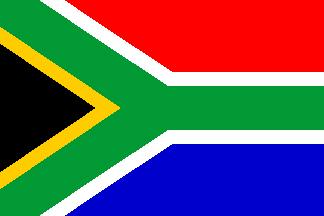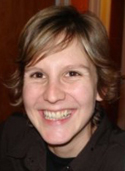South Africa

As a developing nation, we are lucky in South Africa that the government has made science and technology main focus areas in education and therefore the general climate in the country is positive towards research in these areas, including physics.
Currently, the South African university course structure in physics consists of:
Undergraduate course:
- Bachelor of Science, BSc (3 year undergraduate degree)
The course usually consists solely of pure and applied science courses including physics, maths, applied maths, computer science, statistics, etc.
Postgraduate courses:
- Bachelor of Science (Honors), BSc (Hons) (1 year)
Usually students have to achieve a minimum grade to be accepted into an Honors degree program which is the first stage of postgraduate study. It is also possible to change universities at this stage. During the Honours year, students attend lectures covering similar topics and content to that taught in the first years of graduate school in the US*. - Master of Science, MSc (2 years)
After the honors year, students may begin work on a Masters degree. Typically, the MSc in physics is a pure research degree and requires a written thesis to be submitted on which the outcome of the degree is decided (like a mini-PhD). Students choose an area of interest and apply directly to work with a particular supervisor on the MSc. - Doctor of Philosophy, PhD (3-5 years)
Similarly to the MSc., students choose an area of research and a supervisor with whom to work. A maximum of 5 years is allowed to perform the research but usually funding covers only 3 years, putting the burden on the student to fund the remainder of their degree. For the MSc and the PhD the student-supervisor relationship depends on the university and the particular people involved. In some cases, regular update meetings and progress reports are held, whereas in others, things are quite informal.
Funding
In South Africa, all university education is paid for by the student. At the postgraduate level in physics, funding can be obtained mainly in the form of scholarships from the National Research Foundation (NRF http://www.nrf.ac.za ) Since science and technology education is a high priority of the government, recently more scholarships have been made available, particularly aimed at improving demographics in the sciences both in terms of women and previously disadvantaged groups. However, there is a lot of competition for this funding and it usually does not fully cover expenses. Foreign postgraduate students are expected to organize their own funding and fees are usually higher for foreigners than for citizens.
Most postgraduate physics students do part-time tutoring or supervise labs for undergraduates. This is a good way to gain teaching experience as well as earn some extra money for fees!
After the PhD
After the PhD. the canonical path to professorship involves performing post-doctoral research at home or overseas and then applying to universities for lecturing positions from where one can work one's way up the ladder to professorship. At some universities, one may lecture during a post-doc; it depends on the institution. South Africa also has national research facilities including two low energy nuclear laboratories (iThemba Labs) and observatories (South African Astronomical Observatory, Hartebeesthoek Radio Astronomy Observatory) where research can be performed at a post-doctoral and further level. Also launched this year was the African Laser Centre. South Africa has physics theory capabilities across a broad range of topics from astrophysics and cosmology to nuclear physics etc. There is also a strong capability in solid state physics and condensed matter physics at a number of the universities across the country.
The Future
Future growth areas are most likely in astrophysics since construction of the SALT (South African Large Telescope) has recently been completed and there is a strong push to locate the SKA (Square Kilometer Array) in the country as well. The NASSP (National Astrophysics and Space Science Programme) program which is a collaboration between the observatories and a number of South African universities and international funding agencies, was also established in the last couple of years in order to train graduate students in the areas of astrophysics and astronomy.
According to 2002 statistics from the South African Department of Education, at any one time there are ~110 registered PhD students across the country and between 10 and 25 people graduate with PhD's in physics per year**. Some continue in academics, and others leave for industry or the financial or information technology sectors. However, a good general rule of thumb is that there are no unemployed physicists in South Africa and the hope of the local physics community is to increase the number of physics graduate students over the next few years.
National Research Foundation
http://www.nrf.ac.za
iThemba Labs
http://www.tlabs.ac.za
South African Astronomical Observatory
http://www.saao.ac.za/
Hartebeesthoek Radio Astronomy Observatory
http://www.hartrao.ac.za/
South African Large Telescope
http://www.salt.ac.za/
National Astrophysics and Space Science Programme
http://www.star.ac.za/
African Laser Centre
http://www.africanlasercentre.org/
*We use the same general textbooks and cover the same broad topics, differing slightly depending on university.
**http://www.saip.org.za/STFOSA/IPReport.html

